Individual Assignment
Propose a final project masterpiece that integrates the range of units covered, answering:
- What will it do?
- Who's done what beforehand?
- What will you design?
- What materials and components will be used?
- Where will come from?
- How much will they cost?
- What parts and systems will be made?
- What processes will be used?
- What questions need to be answered?
- How will it be evaluated?
Your project should incorporate 2D and 3D design, additive and subtractive fabrication processes, electronics design and production, embedded microcontroller interfacing and programming, system integration and packaging Where possible, you should make rather than buy the parts of your project Projects can be separate or joint, but need to show individual mastery of the skills, and be independently operable
Propose a final project ...
Vermicomposting system with sensors
My final project is a vermicomposting system with sensors. There are a few types of vermicomposting systems, people use plastic bins, continuous-flow-through systems, worm-bags, windrows and other methods to compost with the help of worms. Each method has its pros and cons, plastic bins are cheap and easy to set up but can be hard to harvest. Continuous-flow-through systems are more expensive and harder to set up but easier to harvest. Windrows take the most space and are open to the elements.
For my final project I will be making a Continuous-Flow-Through vermicomposting system with sensors to monitor the conditions of the compost.
What will it do?
CFT system
A CFT (Continuous-Flow-Through) vermicomposting system is a method of vermicomposting where composting worms are fed organic matter from the top and worm castings are eventually harvested from the bottom. The bottom of a CFT system has bars or a mesh to let the worm castings fall through. The top of the system has a lid to keep the worms in and to keep the system dark. The system is usually made from wood or plastic. Some systems have automatic harvesting where a motor pulls a bar across the bottom of the system to push the worm castings out. Other systems rely on manually harvesting with a rake. For the first spiral I will be making a system that relies on manually harvesting with a rake. In later spirals I will add automatic harvesting with a motor.
The technology
The CFT system will have sensors to monitor the conditions of the compost. There will be a Humidity and Temperature sensor to monitor the air outside the system. There will also be a waterproof temperature sensor within the compost to monitor the temperature of the actual compost. Other sensors such as gas sensors and compost humidity sensors may be added to the system in later spirals. The data will be saved to a SD card and/or sent to a server. The data will be visualized on an OLED display and/or on a website.
So, I will be making a CFT (Continuous-Flow-Through) vermicomposting system with sensors to monitor the conditions of the system. The CFT system itself will be about 1 sq/m in surface area. The sensors will be connected to a XIAO Esp32-c3.
Who's done what beforehand?
Commercial CFT
There are commercial CFT systems readily available to buy. The Urban Worm Company sells an assembled version of a modular CFT system from $6995 or you can buy the design plans for $1555 and build it yourself.
CFT Assembled
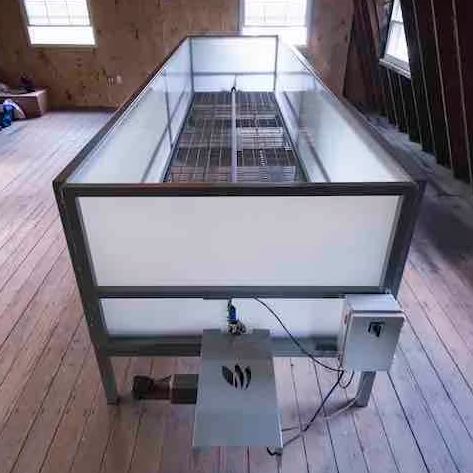
CFT Design Plans

DIY CFT
There are several designs for a DIY CFT system. Some designs are open and free while other are paid for.
Eco Farming Daily has designs for CFTs and tips and tricks for vermicomposting.
DIY CFT
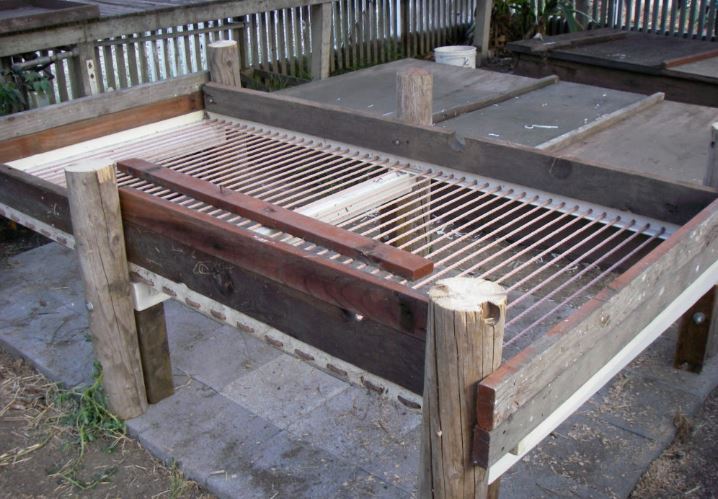
DIY CFT
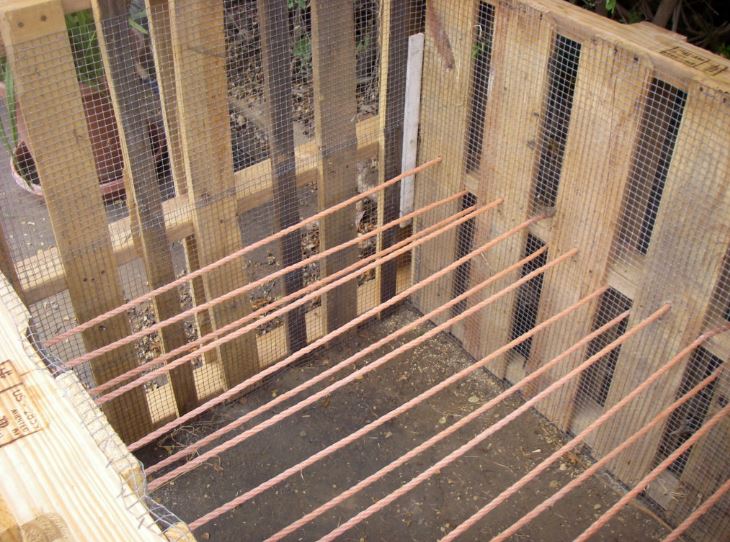
Fab Academy projects
Looking through previous student projects I did not find any large-scale CFT systems like I plan on making. Benjamin Lemay however made a stacking vermicomposting system that I can use as inspiration. Lucia Jonkhoff also made a project that monitors a vermicomposting system using sensors.
Stacking system (Benjamin Lemay)
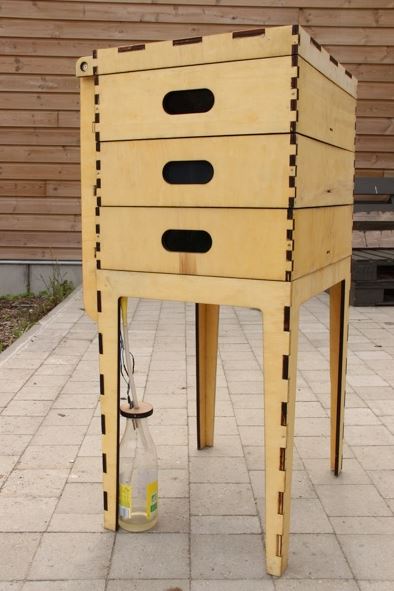
Vermicompost sensors (Lucia Jonkoff)
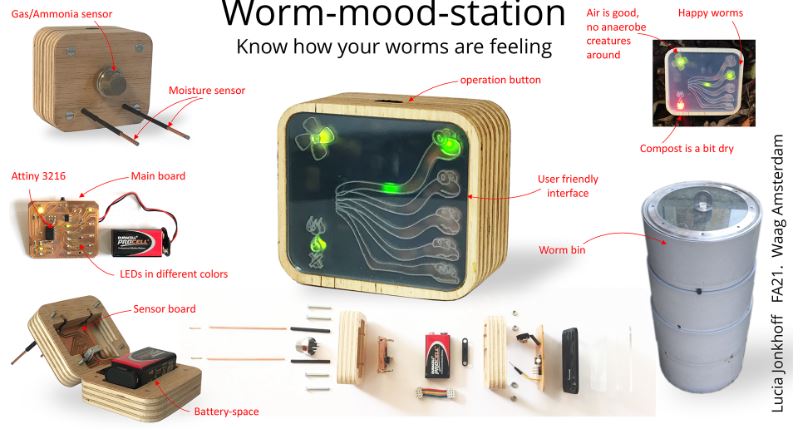
I will most likely be referencing Lucias project since her project used the same type of sensors I intend on using.
What will you design?
CFT system
I will design the CFT system. For reference and inspiration I will draw from both commercial CFT systems and DIY designs. For the first spiral I will make a manually opererated harvesting system but eventually I would like to incorporate automatic machined harvesting.
Technology
I will design the PCB board that will have the microcontroller and all the sensors. The first spiral will be getting everything working properly, then on later spirals I want to make a modular system where sensors can be added or removed easily. I will also design and 3d print a mounting case for the electronics.
What materials and components will be used?
CFT system
The CFT system will be made from wood. I will be using 2x4s and plywood. I will also be using screws and nails to hold the system together. For the bottom of the system I will be using a mesh or bars to let the worm castings fall through.
Technology
I will be using a XIAO Esp32-c3 microcontroller, DHT22 Temperature/Humidity sensor, DS18B20 waterproof sensor, MQ2 gas sensor and a ssd1306 OLED display. A PCB will be designed and milled where all these components will be soldered.
Where will come from?
CFT system
Byko and Húsasmiðjan are hardware stores in Iceland where I can purchase all the wood, screws and stuff needed for the CFT system.
Technology
I already have all the electrical components. Here you can see links to all components.
- XIAO Esp32-c3
- DHT22 Temperature/Humidity sensor
- DS18B20 Waterproof temperature sensor
- MQ2 Gas sensor
- SSD1306 OLED display
How much will they cost?
CFT system
The price for wood and plywood has increased a lot recently in Iceland. A 12 mm plywood 150 cm x 300 cm is priced from $65 and up. The lab has some plywood that I can use for my final project.
Technology
- XIAO Esp32-c3 $4.99
- DHT22 Temperature/Humidity sensor $7
- DS18B20 Waterproof temperature sensor $3
- MQ2 Gas sensor $7.60
- SSD1306 OLED display $3
- Total: $25.59
What parts and systems will be made?
CFT system
The CFT system will be made from plywood, 2x4s and either a mesh or bars for the bottom.
Technology
The PCB will be designed and all components will be connected on the PCB. If I have time I will make a humidity sensor from scratch.
Housing for the electronics will be designed and 3d printed.
What processes will be used?
CFT system
The design for the CFT system will be made in Fusion and/or Inkscape. The milling toolpaths will be done in either Fusion or VCarve. The CFT system will be milled using a Shopbot.
Technology
The PCB will be designed in KiCad and finalized in Inkscape. The PCB will be milled on a Roland MDX-20.
What questions need to be answered?
CFT system
Does the CFT work?
Technology
Do the sensors work?
How will it be evaluated?
CFT system
Does the CFT work? Are the design plans available? Does it look nice?
Technology
Do the sensors work? Is the data readable?
Does the Final Project incorporate 2D and 3D design, additive and subtractive fabrication processes, electronics design and production, embedded microcontroller design, interfacing, and programming, system integration and packaging